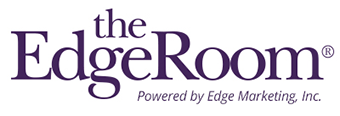Even while some organizations thrived by helping others pivot to remote work, or found new opportunities that proved quite lucrative amid the ongoing pandemic, collectively most of us are saying “good riddance” to 2020.
As we anxiously put this year in the past, there certainly are some lessons and a few new perspectives to take with us as we continue forward. Many of us have found gratitude for the simple things in life, more patience and tolerance and, for parents of school-aged children, there is a renewed appreciation for teachers.
Marketers and business leaders are also taking this opportunity to reassess their operations, including a review of how to reach their various target audiences and with what messages. For most, the best place to start is by revisiting their overriding business goals and how their marketing or PR objectives aim to support those. Reaffirming what it is we are trying to achieve is a critical first step in determining the best strategies and activities to pursue and the only way to effectively calculate ROI.
Now more than ever, we are all required to take a fresh look at what really brings value to our organizations and to redefine success. In-person events, for example, whether for one-to-one sales activities or broader marketing initiatives, have been replaced by virtual meetings and conferences. So how do we measure the value or the success of those events? As with in-person events and all marketing strategies and activities, success depends on what you were trying to achieve in the first place.
Industry associations and other event organizers are working hard to reimagine conferences and sponsorships; however, the vendors on whom they rely to absorb much of the cost of hosting those events may not be as quick to jump on board as they would hope. Many providers are rethinking their strategies to see past what they have always done and to hone in on what they should be doing today to achieve their current objectives – which may include expanding media coverage, basic brand-building, generating leads, promoting thought leadership, other objectives or any combination of these. As such, measuring success is different for every vendor, depending on what they are trying to accomplish.
With respect to 2020 virtual events, yes, many left much to be desired; but, if we’re being honest, the lack of vendor-attendee engagement at most of them is not exactly new. Even at in-person events, many attendees only visit exhibit halls to collect their tchotchkes, play with puppies, fill out their vendor bingo card, register to win bigger prizes or maybe because that’s where they have to go for lunch or snacks. If you are in the camp who thinks it all feels very forced, you’re not alone.
Sure, there are vendors doing some clever promotions around a new product launch, for example, to drive booth traffic. Those few are the ones that understand they’ll get out of it what they put into it and are already finding creative new ways to connect with their targets in the absence of in-person events – but they are usually the minority. Many vendors seem to think if they write a big check to be a sponsor that results just magically happen, and they will always be at least somewhat disappointed with the results – and at a competitive disadvantage.
Is there room for improvement with virtual events? Probably. But is there a one-size-fits-all solution? Probably not. And that isn’t a bad thing. The current circumstances are prompting more companies to reset their expectations and revisit what they’ve always done, shifting focus to what they should be doing based on their current goals and objectives.
About the Author
As a senior consultant and account manager, Jennifer Marsnik helps Edge clients develop and implement strategic PR and marketing plans that support their overall business goals. An avid sports fan, she lives in the Twin Cities area where in pre-pandemic times she enjoyed regularly attending Twins baseball and UofM Gopher football games with her family throughout the summer and fall seasons. This year she’s been playing more golf and will continue cheering on her teams from the comfort of her sofa. Skol, Vikings!













